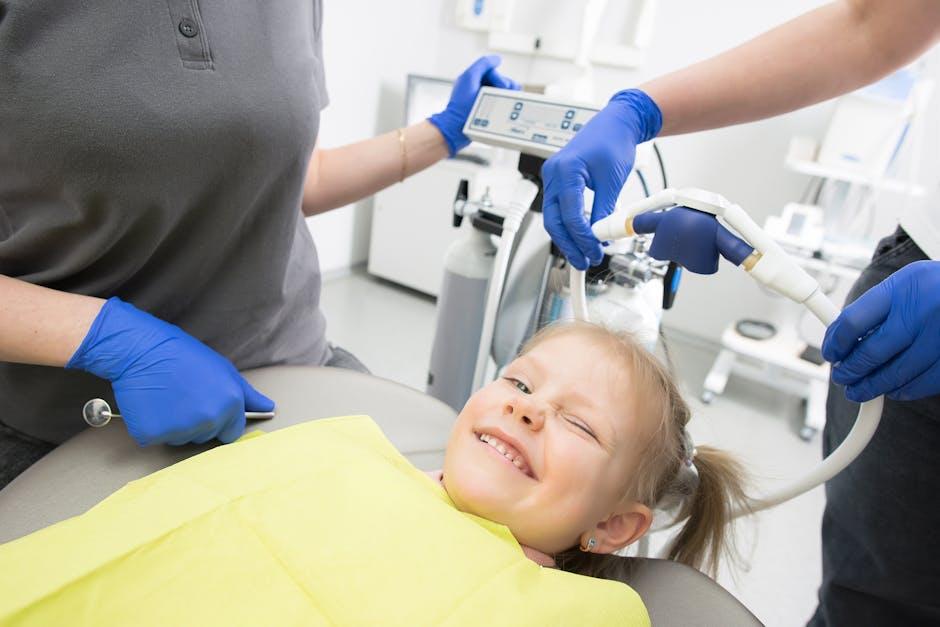
1 in 3 Kids Has Dental Problems, Poll Finds – U.S. News & World Report
Recent findings from a nationwide poll have brought to light an unsettling trend in pediatric health: 1 in 3 kids in the U.S. is grappling with dental problems. This statistic underscores the growing importance of pediatric oral health and the urgent need for increased awareness and preventative care. Dental issues in children can lead to pain, difficulty eating, and even problems with speech and self-esteem.
Understanding the Poll Results
The poll, conducted by a reputable health research organization and cited in U.S. News & World Report, surveyed thousands of parents across the United States about their children’s dental health. The results revealed that approximately 33% of children aged 2 to 17 had experienced some form of dental issue in the past year.
| Age Group | Percentage with Dental Problems |
|---|---|
| 2-5 years | 38% |
| 6-11 years | 32% |
| 12-17 years | 29% |
This data shines a light on how widespread dental problems are among kids and highlights critical age groups that require closer monitoring and intervention.
Common Dental Problems in Children
Parents and caregivers should be aware of the typical dental issues that affect children. Some of the most common dental problems include:
- Tooth Decay (Cavities) – The most prevalent, often caused by poor oral hygiene and sugary diets.
- Gum Disease – Inflammation and infection of the gums leading to discomfort and bleeding.
- Tooth Sensitivity – Pain or discomfort when teeth are exposed to hot, cold, or sweet stimuli.
- Malocclusion – Misalignment of teeth or bite, often requiring orthodontic treatment.
- Enamel Hypoplasia – Insufficient enamel formation that makes teeth more vulnerable.
Why Are So Many Kids Facing Dental Problems?
Several factors contribute to this high incidence rate of dental problems among children:
- Poor Oral Hygiene: Irregular brushing and flossing habits make children more susceptible to cavities and gum disease.
- Dietary Choices: High consumption of sugary snacks, sodas, and processed foods encourages bacterial growth.
- Lack of Access to Dental Care: In many U.S. communities, especially underserved or low-income areas, dental visits are limited.
- Insufficient Parental Awareness: Some parents underestimate the importance of early dental care and routine check-ups.
- Healthcare Challenges During the Pandemic: Missed dental appointments and delayed diagnoses may have worsened children’s oral health.
Impact of Dental Problems on Children’s Health and Well-Being
The consequences of poor dental health in kids can extend beyond the mouth. Here’s how dental issues affect children:
- Pain and Discomfort: Toothaches can interfere with sleep, concentration, and play.
- Speech Development: Missing or damaged teeth can impair speech clarity.
- Nutrition Deficiencies: Difficulty chewing discourages healthy eating habits.
- Self-Esteem Issues: Visible dental problems affect social interactions and confidence.
- Increased Healthcare Costs: Untreated problems lead to complex procedures and emergency visits.
Practical Tips for Protecting Your Child’s Dental Health
Good news: As a parent or caregiver, you can take proactive steps to prevent dental problems. Here are some effective strategies:
- Start Early: Begin cleaning your child’s gums even before teeth erupt; use a soft cloth to wipe gums.
- Regular Brushing & Flossing: Teach children to brush twice daily with fluoride toothpaste and floss once a day.
- Limit Sugar and Sticky Foods: Reduce consumption of candies, sodas, and processed snacks.
- Routine Dental Visits: Schedule the first dental appointment by the child’s first birthday and maintain biannual visits.
- Use Dental Sealants: These protective coatings can prevent cavities on molars.
- Promote Drinking Water: Tap water with fluoride helps strengthen tooth enamel.
Case Study: How Timely Intervention Changed Emily’s Smile
Emily, a 7-year-old from Ohio, had been complaining of tooth pain and sensitivity. Her parents noticed her reluctance to eat certain foods and decided to visit a pediatric dentist promptly. The examination revealed several cavities and early signs of gum inflammation. Through a tailored treatment plan involving gentle fillings, fluoride treatments, and parental education on home care, Emily recovered fully within months. Today, she enjoys healthy oral habits and smiles confidently, demonstrating how crucial early intervention can be.
Summary: Key Takeaways on Kids’ Dental Problems
| Key Point | Details |
|---|---|
| Incidence | 1 in 3 children in the U.S. faces dental problems |
| Most Affected Ages | Young children aged 2 to 5 years |
| Main Causes | Poor oral hygiene, sugary diet, lack of dental care |
| Impact | Physical pain, speech issues, self-esteem, nutrition |
| Prevention | Good hygiene, dental check-ups, healthy diet |
Conclusion
The alarming statistic that 1 in 3 kids suffers from dental problems is a wake-up call for parents, educators, and healthcare providers in the United States. Dental health plays a pivotal role in the overall well-being of children, affecting their growth, development, and happiness. With knowledge, dedication, and accessible dental care, these oral health challenges can be minimized.
By following the practical tips above and prioritizing regular dental visits, parents can help ensure their children enjoy pain-free, healthy smiles that last a lifetime. If you suspect your child has dental issues or it’s time for a check-up, don’t wait—consult a pediatric dentist and take action early.
For more insights and updates on children’s health, continue following U.S. News & World Report and trusted health sources.


